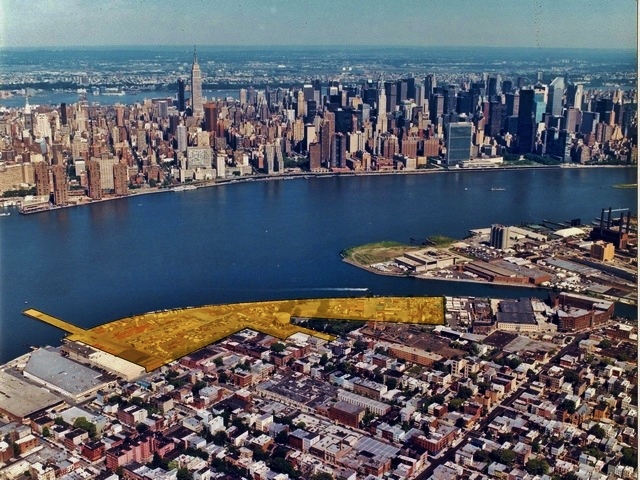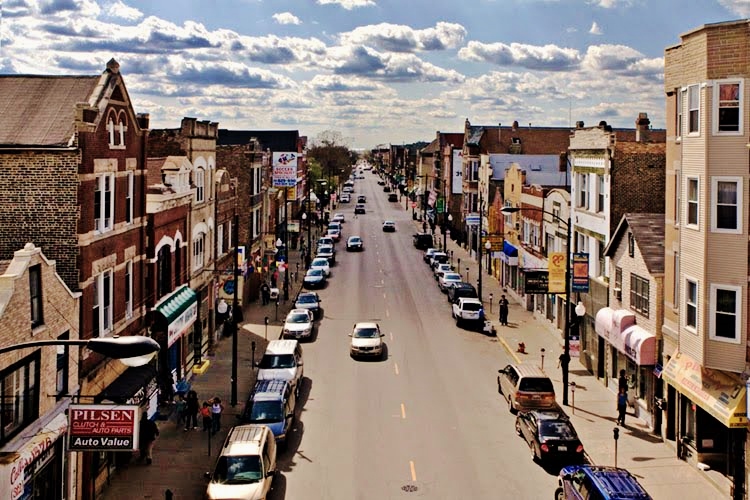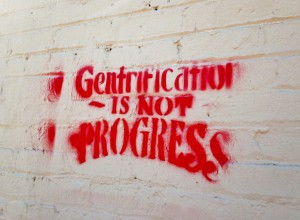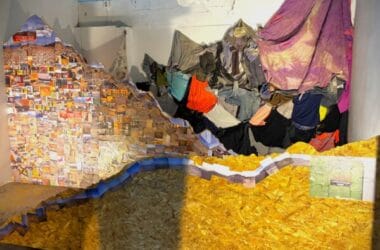Many working class inner-city neighborhoods of color facing green urbanism makeovers come with hipsters and rising rents. Rebecca Tuhus-Dubrow investigates recent research into the ongoing debate on how planners can stop environmental gentrification?


Pretty Park, Affordable Rent: Making Neighborhoods “Just Green Enough”
By Rebecca Tuhus-Dubrow Published in Next City
From green roofs in Chicago to the High Line in Manhattan, U.S. cities have been making high-profile investments in green space — to widespread celebration. But could there be a downside to urban greening? A growing body of academic literature examines a paradox: Low-income communities tend to suffer from various kinds of environmental injustice, including shortage of green space. But when these concerns are addressed — the power plant closes, a park opens — the neighborhood becomes more desirable, often kickstarting a process of so-called “environmental gentrification.”
How, then, can we reduce environmental inequities without displacing the very people the improvements are supposed to benefit? One answer: a “just green enough” model that seeks to remedy injustices without introducing the fancy amenities that can radically transform a neighborhood.
A new paper in the journal Landscape and Urban Planning, by UC Berkeley professor Jennifer Wolch and coauthors, is the latest to advocate this approach. The paper, a literature review, discusses past work on environmental gentrification. In addition to the High Line, which raised property values in what had been a relatively affordable area of Manhattan, the authors cite a study of a stalled proposal to expand park space in Harlem in 2010. The city proposed connecting two pocket parks into a larger green space, but at a community meeting, residents expressed suspicion. Why now, only after luxury condos had been erected nearby? What would closing off the streets mean for traffic in the neighborhood? What would happen to the homeless people who currently spent time in the small parks? Whom, in short, would the project really benefit?
“There was a time in Greenpoint when you couldn’t take a deep breath without gagging. You could taste the oil and sewage in the air,” lifelong resident Laura Hofmann told the New York Post.
Similar questions dog almost any plan to “green” disadvantaged neighborhoods. But the authors do invoke one success story: community activism in Greenpoint, Brooklyn, a historically Polish neighborhood on the waterfront, home to heavy industry. A huge underground oil plume plagued Greenpoint for decades, and its polluted estuary, Newtown Creek, was declared a Superfund site in 2010.
“The city and corporations are colluding to change the city in a very deliberate way,” says Jeremiah Moss of the popular blog Jeremiah’s Vanishing New York. “We’re destroying the urban environment in terms of the diversity of business and diversity of living. New York has always been an exceptional place, and it has always tolerated difference. Different people rubbed up against one another. But it no longer tolerates difference, oddness, and eccentricity.” From the Daily Beast
STORY: Greening Detroit: Positive Change Moves Slow and Fast
[vimeo clip_id="3363551" width=600 height=338 ]Toxic Brooklyn tours the high and low points of Brooklyn’s real estate boom: Williamsburg’s Radiac, the faded glory of Newtown Creek, shady developers building on unhealthy ground at every turn, the surreal majesty of Greenpoint’s sewage treatment and garbage transfer stations, plus the largest environmental disaster in the history of New York City–the Greenpoint Oil Spill.
“Just Green Enough”
In 2012, Winifred Curran, a professor at DePaul University, first coined the term “just green enough” to describe her findings from a case study of Greenpoint. Curran and her coauthors found that life-long residents and newcomers were working together, largely through an organization called the Newtown Creek Alliance, to achieve a cleaner, greener neighborhood while preserving an industrial presence and avoiding the “parks, cafes, and a riverwalk” paradigm. They helped win a $25 million settlement from Exxon Mobil, as well as the declaration of the Superfund site and the establishment of the Newtown Creek Nature Walk. This nature trail, in the shadow of a sewage treatment plant, was dubbed “ironic” by the New York Times, but it has proved popular with locals.
Many visions of the green city seem to have room only for park space, waterfront cafes, and luxury LEED-certified buildings, prompting concern that there is no place in the “sustainable” city for industrial uses and the working class. — Winifred Curran
Bill Schuck, a longtime Greenpoint resident and member of the Newtown Creek Alliance, told me that in addition to cleaning up the neighborhood and expanding access to the water, the group focused on preserving working-class jobs, conscious of the risks of gentrification. He and his fellow activists thought, “Hey, wait a second. Are we doing this to make this attractive to real estate developers? And it was, “No, we’re looking to benefit people like us.” Though Greenpoint has not entirely escaped gentrification, it remains, according to one city official Curran interviewed, “the last real industrial beltway of the city,” with thousands of jobs in transportation, warehousing, and wholesale.


Activists Lead the Way to Environmental Justice
Curran believes that some planners and policymakers have become sensitive to these issues. But, she wrote in an email, “there is a tremendous reliance on the strength of community activists; activists really seem to lead the way, declaring desired outcomes that planners can then try to work with. I think it comes down to what the vision for the city is — a business-oriented place in competition with other global cities for limited investment dollars or a neighborhood-oriented place driven to improve outcomes for all its residents.”
“For gentrification to be tamed or controlled, the entire tax and opportunity structure would have to be changed, by assessing taxes on the basis of the income of residents, by taxing capital gains at 100 percent, by ending the corruption of politicians who ‘cut deals’ with developers to beef up their electoral coffers and get re-elected. And by changing the city’s real estate priorities,” said John Betancur, University of Illinois at Chicago.

Environmental gentrification embodies essentially the same challenges as all gentrification. It’s painfully logical, almost tautological: When a place becomes more attractive, it tends to become more expensive. How do you improve conditions without raising rents?
“It’s about the people, it’s not about the place,” Curran told me. “Not, this is what makes it the cleanest, this is what makes it the prettiest, this is what makes it the greenest.” And yet, “We’re not so anti-gentrification that we say, ‘Great, we love that sludge.’”
The Science of Cities column from Next City is made possible with the support of the John D. and Catherine T. MacArthur Foundation.













Pingback: Just Green Enough: A Compromise of Equality & Sustainability | How We See the Environment
Pingback: Images – Gentrification – In Search of Space